Results 8,341 to 8,350 of 12096
Thread: Anandtech News
-
06-29-18, 10:41 AM #8341
Anandtech: UMC Acquires Fujitsu’s Stake in Semiconductor Joint Venture
Fujitsu Semiconductor and UMC on Friday said that the latter will acquire 100% ownership of Mie Fujitsu Semiconductor (MIFS), a joint venture between two companies. The move essentially ends history of Fujitsu’s in-house manufacturing of microelectronics that began in 1956. Meanwhile, UMC will gain additional manufacturing resources in Japan, which somewhat boosts its competitive positions against key rivals.
Under the terms of the deal, UMC will acquire 84.1% of MIFS from Fujitsu Semiconductor for around ¥57.6 billion ($520.52 million), increasing its current stake of 15.9% to 100%. The transaction is planned to close on January 1, 2019, following approval by the relevant regulators. After the transaction is closed, MIFS will continue to operate and will become a wholly owned subsidiary of UMC (its official name will be published at a later date).
MIFS runs two 300-mm fabs — the Fab-B1 and the Fab-B2 constructed in 2004 and 2006, respectively. Both fabs were built by Fujitsu to produce chips using 90 nm and 65 nm process technologies and have never been seriously upgraded. In 2009 the company decided to go “fab lite” and spun off the fabs into Fujitsu Semiconductor Limited, which started to outsource production of 28-nm and 40-nm chips to TSMC, which was reportedly interested in taking over the plants. In 2014 Fujitsu Semiconductor agreed to form a joint venture with UMC and sell a stake in MIFS to the Taiwanese contract maker of chips. In return, UMC licensed its 40 nm process technology to MIFS and even helped to install an appropriate production line in one of the fabs.
Various sources report that the two MIFS fabs can produce from 28,000 to 40,000 300-mm wafers per month, which will be a nice addition to UMC’s 140,000 300-mm wafers per month. Meanwhile it is necessary to note that since the fabs have never been seriously upgraded, they cannot produce chips using 28 nm technology let alone FinFET fabrication processes. MIFS implied several years ago that 40 nm would be used for the next 20 to 30 years, though Fujitsu Semiconductor still decided to sell its aging asset to UMC. The decision puts an end to Fujitsu’s 62-year history of microelectronics production that kicked off in the silicon transistor era in 1956.
UMC itself has been having troubles developing FinFET-based process technologies and barely processed several thousands of wafers using its 14 nm node in 2017. Therefore, expanding production capacities with mature product lines seems to be a bid to increase sales.
UMC’s acquisition of MIFS will enable the company to better compete against GlobalFoundries and TSMC for customers that require cheap and mature process technologies as well as for clients in Japan.
Related Reading:
- Fujitsu Spins Off Smartphone and PC Divisions
- Lenovo to Acquire Controlling Stake of Fujitsu’s PC Business
- Samsung to Pay $400 Million for Infringing FinFET Patent
- Samsung Foundry Roadmap: EUV-Based 7LPP for 2018, 3 nm Incoming
More...
-
06-29-18, 12:29 PM #8342
Anandtech: Silicon Power Has a Host of USB-C Peripherals: MicroSD Card Reader, Dongle
The USB Type-C interface yet has to become as ubiquitous as USB Type-A, but as there are laptops that only have USB-C ports, a number of manufacturers already produce flash cards with dual (or even triple) interfaces. Silicon Power appears to be the first maker to produce a microSD card reader that has two interfaces and therefore supporting a host of various devices. In addition, the company is prepping several USB-C peripherals, such as dongles and docks.
Silicon Power’s USB Type-A/USB Type-A microSD card reader supports microSDXC cards, up to 5 Gbps bandwidth as well as OTG capability that makes the device compatible with various mobile gadgets in addition to regular computers.
Given the fact that microSDXC cards are available in capacities up to 512 GB, Silicon Power’s card reader may be used to build a high-capacity miniature external storage device for a MacBook/MacBook Pro. Obviously, such storage device will be rather expensive, but it will very small and compatible with both new and legacy PCs.
In addition to the universal USB-A/USB-C microSD card reader, Silicon Power has two USB-C dongles and two docking stations. All of Silicon Power’s USB Type-C products feature USB 3.1 Gen 1 (5 Gbps) interface, which emphasizes their positioning: miniature MacBook notebooks as well as various inexpensive laptops that do not support USB 3.1 Gen 2 transfer rate (10 Gbps).
Silicon Power’s lineup of USB-C devices includes Nimbus (D-Sub/VGA) and Focus (HDMI 1.4, so, up to 4Kp30) display dongles as well as Magnus and Stratus docking stations (check out their specs below). The more expensive Magnus supports power delivery, so it can be used to charge laptops during usage (important for MacBooks that only have one USB-C port used for data and power), whereas the Stratus will be able to boast with a competitive price that Silicon Power is known for.
Silicon Power will release its USB-C devices in the coming months, so stay tuned for more details regarding prices and launch dates.
Related Reading:Silicon Power's USB-C Peripherals Magnus Stratus Focus Nimbus Mobile Card Reader microSD - 1 USB Type-A 3 (Gen 3) 1 (Gen 2)
1 (Gen 3)- - USB Type-C 1 1 D-Sub - D-Sub (up to 2048x1152 at 60 Hz) - D-Sub (up to 2048x1152 at 60 Hz) DisplayPort DP 1.1 (up to 3840x2160 at 30 Hz) - HDMI HDMI 1.4 (up to 4096x2160 at 24 Hz) - Ethethet 1 GbE - Audio 3.5-mm out
3.5-mm in- Power Delivery Up to 60 W - Data Transfer Rate 5 Gbps
- ADATA, PNY, and Team Group to Launch 512 GB microSDXC Cards This Summer
- Western Digital Launches SanDisk Ultra microSD Card with 400 GB Capacity
Want to keep up to date with all of our Computex 2018 Coverage? 
Laptops
Hardware
ChipsFollow AnandTech's breaking news here!
More...
-
07-02-18, 07:07 AM #8343
Anandtech: The Kingston A1000 NVMe SSD Review: Phison E8 Revisited
Kingston's first low-end NVMe SSD is the A1000, using Toshiba's latest 64-layer 3D TLC NAND and the Phison E8 controller. The price isn't quite down to SATA SSD levels, and the performance is nowhere near as impressive as high-end NVMe SSDs. The A1000 is in a tight spot where it offers a small step up from SATA performance for a not so small price premium.
More...
-
07-02-18, 08:09 AM #8344
Anandtech: MSI's New Threadripper 2 Motherboard on Steroids: X399 Creation
One of the most impressive motherboard designs coming out of Computex was MSI’s new X399 Creation motherboard. With Threadripper 2 around the corner, sporting support for up to 32 cores and 250W TDP, a couple of the motherboard manufacturers are building X399 ‘refresh’ motherboards that are optimized for the new processors, and this is MSI’s very impressive effort.
The headline from this motherboard is the 19 power phases, arranged as 16 for the processor. This is likely a four-phase implementation with two doublers, but still comes in as eight more than the amount of phases for the CPU compared to any other Threadripper motherboard on the market. The effect of using more phases in this way means that the power multiplexing over time that occurs between phases gives each phase less time being the primary phase, as well as splitting the delivery with other segments, reducing the overall load and allowing for more headroom and/or better longevity. The power delivery is also sided with two 8-pin EPS 12V connectors.
Buy AMD Threadripper 1950X on Amazon.com
The reason why most motherboard manufacturers only use eight is because the socket and memory design is bulky: ultimately there is only enough space for six phases, or eight if a smaller choke design is used. In order to fit sixteen, MSI has had to push the socket and memory down, forcing the manufacturer to choose to either lose one of the PCIe slots, or extend the board vertically (they seem to have done the latter). But this also gives the manufacturer a larger choice for phases and chokes with fewer space constraints, if a good enough power delivery heatsink is also applied. In these cases it sometimes requires more PCB layers to help with power/ground and routing, and MSI is using eight which is a high number for a consumer motherboard (usually 4-8, rarely 10), but not the highest (and server/workstation boards often use from 6 to 12 depending on the feature set).
On the board MSI is using a dual power delivery heatsink design, connecting the main power delivery heatsink by a heatpipe to a heatsink next to the rear panel that also helps to cool all the networking options. One thing to note is the styling on the heatsink and the board: it is very angled, and my feedback to MSI is that the board looks very busy. This is going to be MSI’s halo Threadripper 2 motherboard, and to be honest, the styling needs a good amount of work.
For a Halo motherboard, MSI is supporting four PCIe slots from the processor, although without water cooling only 3-way is going to be used due to PCIe slot spacing. Between the slots is an M.2 PCIe 3.0 x4 slot, with another slot actually next to the DRAM slots, as the board is also extended in width as well (making it E-ATX). MSI will be bundling its Quad M.2 PCIe 3.0 x16 card when the board is sold, giving a total of six M.2 slots. MSI says that it supports seven M.2 total, although the last one does not seem to be obvious, so it could be on the rear of the motherboard. There is no U.2 slot, as it seems that the form factor is basically dead for the consumer market.
For controllers, MSI has equipped the X399 Creation with dual Intel gigabit Ethernet ports, and an Intel 802.11ac Wi-Fi. For a halo motherboard I was expecting to see Aquantia’s 5G or 10G controller, however we do not get that here. There is no Thunderbolt either, but there are four USB 3.1 (10 Gbps) ports on the rear (one Type-C), and at least eight USB 3.0 ports, four or six of which on the back panel and two onboard headers for cases. There is also a Type-C onboard header, but it is not obvious if this is USB 3.0 or USB 3.1. Audio will be with an upgraded Realtek ALC1220 codec solution, with PCB separation between digital and analog signals and additional filter caps.
One of the features that MSI was keen to promote is that the board supports 10 fan headers in PWM mode but also three user-positioned thermal sensors that will be bundled in the box. This will allow users to define their thermal environment, with the software, how they need to.
We expect the MSI X399 Creation (or is it MSI MEG Creation?) to come to the market sometime soon, before the launch of Threadripper 2, or perhaps the same day as a launch partner with the processor. We expect a high price, although the lack of something like a 10G NIC will mean it won’t be super high.
Gallery: MSI X399 Creation
Want to keep up to date with all of our Computex 2018 Coverage? 
Laptops
Hardware
ChipsFollow AnandTech's breaking news here!
More...
-
07-02-18, 10:14 AM #8345
Anandtech: Philips Momentum 43-Inch 4K DisplayHDR 1000 DCI-P3 Gaming LCD Now Availabl
Philips has started sales of its Momentum 436M6VBPAB ultra-high def gaming LCD, which happens to be one of the world’s first shipping monitors to obtain the DisplayHDR 1000 certification. Pricing of the product varies from country to country and from store to store, but in general its retail price is in line with a rather moderate sub-$1000 MSRP announced a couple of months ago.
The Philips Momentum 43-Inch at a Glance
The Philips Momentum 436M6VBPAB is based on a 43-inch 8-bit + FRC MVA panel featuring a 3840×2160 resolution, 720 – 1000 nits brightness (typical and peak), a 4000:1 contrast ratio, a 4 ms response time, 60 – 80 Hz refresh rate (optimal and overclocked), 178°/178° viewing angles, and so on (check out all the specs in the table below). A major selling point of the display it its Quantum Dot-enhanced backlighting that enables it to cover an above-average 97.6% of the DCI-P3 color gamut as well as 100% of the sRGB color range. The monitor is AMD FreeSync certified, however we haven't seen the FreeSync minimum refresh rate. So it's unclear whether this monitor supports a wide enough range for LFC. Though even if the LCD’s FreeSync ranges are far from what hardcore gamers might want, it is still good to have a dynamic refresh rate tech rather than not have it at all on a 43-inch gaming monitor.
The 43-inch Philips Momentum was the industry’s first display to get the DisplayHDR 1000 logo from VESA (the second monitor to get the badge was the ASUS ROG Swift PG27UQ, which is now also shipping). This means that it complies with VESA’s rather strict requirements for brightness (600 nits full-screen long duration minimum, 1000 nits full-screen flash minimum) and black levels (corner maximum limit of 0.05 nits and tunnel maximum limit of 0.1 nits). The latter are particularly hard to get even on a VA panel, and all but requires local dimming. Philips hasn't published anything here, but from reports I've seen elsewhere, it sounds like they're using a 32 zone edge-lighting system.
The Philips 436M6VBPAB has four display inputs: 1x DisplayPort 1.2, 1x Mini DisplayPort 1.2, 1x HDMI 2.0, and 1x USB Type-C that can be used both for display connectivity and as an upstream port for a USB 3.0 hub. As expected from an ultra-large LCD, the unit supports Picture-in-Picture and Picture-by-Picture capabilities from two sources. As for audio, the display has a 3.5-mm audio input, 3.5-mm audio output as well as two built-in 7-W speakers with the DTS Sound badge. Finally, the 43-incher comes with a remote controller that can be used to control the monitor as well as other devices connected using HDMI (e.g., media players, game consoles, etc.), which is particularly handy as the huge LCD will clearly be used for watching content.
To read more about the Philips Momentum 43-inch monitor you can check out the original material covering the product as we move to the topic of the news story — availability and prices.
Buy Philips Momentum 436M6VBPAB on Amazon.com
Pricing and Availability
The Philips Momentum 436M6VBPAB is currently available from Amazon in the U.S., Germany, France, Spain, and Japan. Since the product is very special and probably is in high demand, its prices at Amazon in Europe seem to be somewhat inflated. Good news is that a number of stores in Austria, Germany, Poland, and Nordic countries are selling (or at least taking pre-orders) on the 43-inch gaming LCD at its MSPR of €799 or even below that.
Since the Philips 436M6VBPAB is sold not only by Amazon in the U.S., and a couple of large retail outets like MediaMarkt or Saturn in Europe, but can also be bought from smaller retailers, it is evident that the product is available worldwide at price points that do not really bite. Apparently, Philips (just like ASUS, MSI, Samsung, and NVIDIA) believes that demand for large gaming-grade displays is about to skyrocket and it has a product that offers premium features at a moderate price.Pricing and Availability of the Philips Momentum 436M6VBPAB Retailer Country Local Price Equivalent in USD Amazon U.S. $1,000 $1,000 Germany €990 $1,159 France €1,081 $1,265 Spain €1,081 $1,265 Japan ?106,205 $959 MediaMarkt Germany €869 $1,017 Otto €790 $925 Saturn €869 $1,017 MediaMarkt Austria €799 $935 ProShop €805 $942 Saturn €799 $935 Ale.pl Poland €727 $850 Zizako €738 $864 Komplett Denmark 6,490 kr. $1,018 Finland €754 $882 Sweden 7,790 kr. $870 Arvutitark Estonia €720 $843
Gallery: Philips Unveils 43-Inch 4K Gaming LCD with DisplayHDR 1000, DCI-P3, FreeSyncPhilips Momentum 43" 4K HDR display with Ambiglow 436M6VBPAB Panel 43" MVA Native Resolution 3840 × 2160 Maximum Refresh Rate 60 Hz (normal)
80 Hz (overclocked)Response Time 4 ms GtG Brightness 720 cd/m² (typical)
1000 cd/m² (peak)Contrast 4000:1 Backlighting LED with quantum dots Viewing Angles 178°/178° horizontal/vertical Aspect Ratio 16:9 Color Gamut 100% sRGB/BT.709
97.6% DCI-P3HDR HDR10 DisplayHDR Tier 1000 Dynamic Refresh Rate Tech AMD FreeSync
? - 80 HzPixel Pitch 0.2479 mm² Pixel Density 102 PPI Inputs 1 × DisplayPort 1.2
1 × Mini DisplayPort 1.2
1 × HDMI 2.0
1 × USB Type-CAudio 3.5 mm input/output
2 × 7 W DTS Sound speakersUSB Hub 2 × USB 3.0 Type-A connectors
1 × USB 3.0 Type-C inputVESA Mount 200 × 200 mm MSRP Europe: €799
UK: £699
US: $799 without VAT (unconfirmed)





Related Reading:
- Philips Unveils 43-Inch 4K Gaming LCD with DisplayHDR 1000, DCI-P3, FreeSync
- BenQ Unveils EX3203R 32-inch Curved LCD with FreeSync 2, DCI-P3, & USB-C
- AOC Announces AGON AG322QC4 32-Inch Curved LCD with FreeSync 2 & DisplayHDR 400
- Samsung Announces First Freesync 2 Monitors: CHG70 & CHG90 - Quantum Dots, Up to 49”, 144 Hz, DCI-P3
- AMD Announces FreeSync 2: Easier & Lower Latency HDR Gaming
- Microsoft and AMD to Bring FreeSync 2 Support to Xbox One S and Xbox One X This Spring
- Philips Readies Curved Ultra-Wide 492P8 Display: 49”, 32:9, USB-C, Sub-$1100
- Philips Brilliance 328P6AU QHD Display Launched: USB-C Dock, 99% AdobeRGB, Color Calibrated
More...
-
07-02-18, 05:06 PM #8346
Anandtech: EVGA Introduces BR Series Power Supplies: 80Plus Bronze, 450W-750W, $50+
EVGA has introduced a new lineup of power supplies to add to their ever-growing list. Dubbed the BR series, EVGA says the new PSUs are built upon their existing bronze rated power supplies but have made improvements customers have asked for. The BR series is 80 PLUS certified, non-modular design using all black fully sleeved cables, 120mm sleeve bearing fan, better voltage stability on the 3.3V/5V rails, and is supported by a 3-Year warranty. The new lineup consists of four different SKUs, 450W, 500W, 600W, and 700W, which gives users plenty of options to purchase a properly sized unit.
The BR series power supplies come in the usual ATX form factor with a familiar black chassis. The devices' cables are hardwired as opposed to modular which saves the time of plugging in any cables but does trade off that minor convenience with the where to put all the cables. Keeping the power supply cool is a 120mm sleeve bearing fan that EVGA says results in quieter operation and longer lifespan. According to their documentation, the fan is always on with an idle rating of less than 20dBA which begins to ramp up around 50% loads for all of the SKUs (slopes will vary depending on model).
Buy EVGA 500 BR on Amazon.com
Improvements on the 3.3C and 5V rails come from a DC to DC converter with less signal noise which they say will help with stability on those rails. There is a long list of internal protections including OVP (Over Voltage), UVP (Under Voltage), OCP (Over Current), OPP (Over Power), SCP (Short Circuit), and OTP (Over Temperature) which should keep the hardware attached safe. EVGA offers a 3-year warranty on the BR series power supplies, notably less than their higher-tier G3 series, but still typical for more entry-level power supplies. The combined output value is rated at 30C which is a bit less than the 40C typically used, but these should still fare well in most environments.
The BR series power supplies are available now at Newegg, Amazon, or the EVGA website. Pricing on the units are from $49.99 (450W), $54.99 (500W), $64.99 (600W), and $74.99 (700W). Amazon is currently offering two extra years, for a total of five, on the warranty if the unit is purchased and registered from now until 12/31/2018.
EVGA BR 450W AC INPUT 100-240 VAC, 50-60 Hz RAIL +3.3V +5V +12V +5Vsb -12V MAX OUTPUT 20A 20A 37.5A 3A 0.3A 80W 450W 15W 3.6W TOTAL 450W @ 30C Connectors 1 x 24/20-pin motherboard connector (550mm)
1 x 8/4-pin EPS/ATX12V connector (600mm)
2 x 8/6-pin PCIe connector (550mm/670mm)
6 x SATA connector (2 x 450mm/570mm/690mm)
3 x 4-pin Molex connector (450mm/570mm/690mm)
1 x Floppy (810mm - attached to Molex)500W AC INPUT 100-240 VAC, 50-60 HzRAIL +3.3V +5V +12V +5Vsb -12V MAX OUTPUT 20A 20A 41.7A 3A 0.3A 120W 500W 15W 3.6W TOTAL 500W @ 30C Connectors 1 x 24/20-pin motherboard connector (550mm)1 x 8/4-pin EPS/ATX12V connector (600mm)2 x 8/6-pin PCIe connector (550mm/670mm)6 x SATA connector (2 x 450mm/570mm/690mm)3 x 4-pin Molex connector (450mm/570mm/690mm)
1 x Floppy (810mm - attached to Molex)600W AC INPUT 100-240 VAC, 50-60 HzRAIL +3.3V +5V +12V +5Vsb -12V MAX OUTPUT 24A 20A 50A 3A 0.3A 130W 600W 15W 3.6W TOTAL 600W @ 30C Connectors 1 x 24/20-pin motherboard connector (550mm)1 x 8/4-pin EPS/ATX12V connector (600mm)2 x 8/6-pin PCIe connector (550mm/670mm)6 x SATA connector (2 x 450mm/570mm/690mm)3 x 4-pin Molex connector (450mm/570mm/690mm)
1 x Floppy (810mm - attached to Molex)Related Reading:700W AC INPUT 100-240 VAC, 50-60 HzRAIL +3.3V +5V +12V +5Vsb -12V MAX OUTPUT 24A 20A 58.3 3A 0.3A 150W 699.6W 15W 3.6W TOTAL 700W @ 30C Connectors 1 x 24/20-pin motherboard connector (550mm)1 x 8/4-pin EPS/ATX12V connector (600mm)4 x 8/6-pin PCIe connector (2 x 550mm/670mm)9 x SATA connector (3 x 450mm/570mm/690mm)3 x 4-pin Molex connector (450mm/570mm/690mm)
1 x Floppy (810mm - attached to Molex)- Silverstone Launches NJ450-SXL Power Supply: Fanless SFX-L, 80Plus Platinum, 450W
- EVGA's Next-Gen Power Supply for SFX: Supernova 650GM
- Corsair Introduces New SF Series and Vengeance Series Power Supplies
- Going Big: EVGA's SuperNova 2000W G+ Power Supply
- ASUS ROG Goes For Power Supplies: ROG THor 1200W Platinum
- FSP Demonstrates Hydro PTM+ 1200 W: a Liquid-Cooled PSU with RGB LEDs
- CES 2016: Deepcool’s Gamer Storm brand Exhibits Water Cooling for a Power Supply
- FSP Dagger 500W and 600W SFX PSUs Come To Market: From $99 with 80Plus Gold
More...
-
07-03-18, 09:53 AM #8347
Anandtech: The NVIDIA Titan V Deep Learning Deep Dive: It's All About The Tensor Core
When we last discussed the NVIDIA Titan V in our preview, it was only a few weeks after its surprise launch at NIPS 2017. We came away with the understanding that the Volta-based Titan V was a new breed of NVIDIA’s Titan, their prosumer line of video cards, one that essentially encapsulated NVIDIA’s recent compute achievements and how they got there. Which is to say, deep learning and neural networking has quickly become the driving force behind NVIDIA GPUs as state-of-the-art compute accelerators, now incorporating built-in with hardware and software acceleration for machine learning operations. Deep learning prowess is the calling card of the Titan V and of Volta in general, and that performance is what we will be investigating today.
More...
-
07-03-18, 12:30 PM #8348
Anandtech: Honor Launches £99 Honor 7S
Normally we don’t tend to cover lower end smartphones due to the sheer size of the market which would require vast manpower to write about, but sometimes we see some very interesting releases that do have some very attractive value. The last such device we covered was the release of the Moto g6 and e5.
Last week Honor announced the European launch of the new Honor 7S, a lower tier model fitting in the existing Honor 7 family which we also last covered in December.
The 7S’ true strength lies in the price. At a launch price of only £99 in the UK and around 133€ in Germany on Amazon, the Honor 7S really undercuts a lot of competing alternatives of comparable specs by around 30%.New Honor 7S compared to 7X Honor 7X Honor 7S SoC HiSilicon Kirin 659
4x Cortex-A53 @ 2.36GHz
4x Cortex-A53 @ 1.70GHz
ARM Mali-T830MP2
@ 900MHzMediaTek MT6739
4x Cortex-A53 @ 1.5GHz
Imagination PowerVR GE8100
@570MHzDisplay 5.93-inch 2160x1080 (18:9)
LTPS IPS LCD5.45-inch 1440x720 (18:9)
LCDDimensions 156.5 x 75.3 x 7.6 mm
186 grams146.5 x 70.9 x 8.3 mm
142 gRAM 4GB LPDDR3 2GB LPDDR3 667MHz NAND 64GB
+ microSD16GB
+ microSDBattery 3340 mAh (12.85 Wh)
non-replaceable3020 mAh (11.47 Wh)
non-replaceableFront Camera 8MP 5MP (2592 x 1944)
Front FlashRear Camera Main Sensor:
16MP (4608 x 3456)
Secondary Sensor:
2MP
LED flashMain Sensor:13MP (4160 x 3120)
F/2.2
Secondary Sensor:LED flashModem HiSilicon / MediaTek LTE (Integrated)
2G / 3G / 4G LTESIM Size 2x NanoSIM (dual standby) ( XXX-L29)
1x NanoSIM (XXX-L09)Wireless 802.11a/b/g/n, BT 4.1, GPS/Glonass/BDS 802.11a/b/g/n, BT 4.0, GPS/Glonass/BDS Connectivity USB 2.0 microUSB
3.5mm headsetmicroUSB 2.0
3.5mm headsetLaunch OS Android 7.0 with EMUI 5.1 Android 8.1 with EMUI 8.0 Launch Price EUR 299€ / GBP £269 EUR 133€ / GBP £99
The 7S is powered by a MediaTek MT6739 configured with 4x Cortex A53’s at 1.5GHz and an Imagination PowerVR GE8100 GPU. Main memory capacity comes in at 2GB of LPDDR3 at 667MHz and we have 16GB of storage on board with option of expandable storage via microSD slot.
The phone comes with a 3020mAh battery which given the lower specifications of the SoC should result in respectable battery life. The screen seems to be a regular LCD panel coming in at 5.45” and a resolution of 1440 x 720. However the screen diagonal isn’t really representative of the size of the device as it’s an 18:9 format display – with a width of only 70.9mm the 7S comes in towards the smaller spectrum of phone form factors.
Camera wise we shouldn’t be expecting anything amazing in terms of quality, yet Honor still managed to put in a 13MP sensor in. It also has a 5MP front camera and that’s where we see the only other specification outside of the bare bone features of the phone: a front LED flash. Honor still chose to deliver the phone with a microUSB socket as it seems at these price ranges every cent in cost is paid attention to, which is actually great in terms of audio as it retains a 3.5mm headphone jack.
Interestingly the phone launches with Android 8.1 and EMUI 8.0, meaning it’s on the most up to date Android version, something that was severely lacking on the Honor 7X and came at great criticism.
Overall the Honor 7S is just a bare-bone phone in terms of specifications, yet Honor managed to deliver a design that from a distance could very well be confused with any other higher end device. The fact that the very low end has evolved so much over the last 2 years and there’s such much more attractive devices is great. And for just £99, you’ll have a hard time arguing against the value that the phone provides.
More...
-
07-03-18, 05:18 PM #8349
Anandtech: Seagate Announces BarraCuda Consumer SATA SSD
Seagate has pretty much always been a major player in the storage market, where they're known primarily for their hard drives. They haven't been completely absent from the SSD market, but they have focused almost exclusively on the enterprise SSD market. It has been quite a while since we've seen a consumer-oriented SSD from Seagate, but the new BarraCuda SATA SSD brings them back into play.
The BarraCuda SSD comes with minimal technical specs, but what we have so far points to a mainstream SATA drive that probably uses current-generation 64L 3D TLC NAND flash memory and a controller with the usual DRAM cache. The internals may offer a hint as to Seagate's plans for the consumer SSD market: if the BarraCuda is just a Silicon Motion reference design, then Seagate may not be very serious about competing in this market segment. If they've written their own firmware for a Silicon Motion or Marvell controller, then the BarraCuda is more likely to be an interesting competitor and less likely to be another one-off product.
Pricing appears to be only slightly higher than competitors like the Crucial MX500 or WD Blue, which is to be expected since Seagate doesn't have the benefit of manufacturing their own flash memory (though they are now a minority shareholder of Toshiba Memory). The five year warranty and 0.3 DWPD endurance rating are standard for mainstream consumer SATA SSDs.Seagate BarraCuda SSD Specifications Capacity 250 GB 500 GB 1 TB 2 TB Model Number STGS250401 STGS500401 STGS1000401 STGS2000401 Controller unspecified NAND Flash unspecified Form-Factor, Interface 6 Gbps SATA, 2.5" Sequential Read up to 540 MB/s Sequential Write up to 520 MB/s Random Read IOPS up to 90k IOPS Random Write IOPS unspecified DRAM Buffer unspecified Warranty 5 years MTBF 1.8M hours Write Endurance unspecified 1092 TB
0.3 DWPDPrice $74.99 (30¢/GB) $119.99 (24¢/GB) $229.99 (23¢/GB) TBA
Seagate is planning a limited release through Amazon Prime this month, followed by broad availability in September.
More...
-
07-03-18, 07:08 PM #8350
Anandtech: ADATA Enters High-End Enterprise SSD Market With SR2000
Until now, ADATA's SSD portfolio has consisted of client-focused SSDs and industrial-grade models based on similar hardware but optionally rated for extreme temperatures, with only the occasional purely server-oriented SSD. ADATA is entering a new market segment with the release of the SR2000 family of enterprise SSDs with capacities up to 11TB.
The ADATA SR2000 family uses Microsemi's Flashtec NVMe SSD controllers, from the generation codenamed "Belmar" consisting of the NVMe2016 and NVMe2032 controllers with 16 and 32 channels respectively (compared to 4 or 8 for client SSDs). The SR2000 family consists of two product lines: the U.2 SR2000SP and the add-in card SR2000CP. Both product lines include capacities ranging from 2TB to 11TB. The U.2 versions offer hot-swap capability while the add-in card versions support a PCIe 3 x8 interface for much higher sequential transfer rates and slightly better random read speeds. The SR2000 SSDs are aimed at read-intensive workloads, with endurance ratings in the 1-3 drive writes per day range and relatively unimpressive random write speeds.
ADATA hasn't confirmed what flash memory they're using in the SR2000, but is is most likely Micron's 32L 384Gb 3D TLC NAND. This is a generation behind the 64L parts that are currently doing quite well in the client/consumer market. From a hardware perspective, this makes the SR2000 very similar to Micron's own 9200 series enterprise SSDs and some other drives that use the same controller and NAND combination, such as the Memblaze PBlaze5. That isn't to say that the SR2000 will behave the same as other NVMe2016-based drives: Microsemi's controllers dominate the high-end enterprise SSD market but each vendor that adopts the controllers does their own firmware customization. ADATA's product information doesn't offer much information about the firmware, and it is not clear whether advanced NVMe features like dual-port support or multiple namespaces are implemented by the SR2000 SSDs.
The SR2000 may end up being a short-lived product for ADATA even if it is successful, because the long QA process for a successor with 64L 3D TLC is undoubtedly already underway. The competition is already sampling drives with 64L 3D NAND based on the same controllers, and other segments of the enterprise SSD market are already awash in 64L NAND.ADATA SR2000 Series Specifications SR2000SP SR2000CP Form Factors 2.5" U.2 15mm HHHL AIC Interface PCIe 3.0 x4 PCIe 3.0 x8 Capacities 2 TB, 3.6 TB, 4 TB, 8 TB, 11 TB Controller Microsemi Flashtec PM8607 NVMe2016 (or PM8609 NVMe2032) Protocol NVMe 1.2a NAND 3D Enterprise TLC NAND memory Sequential Read 3.5 GB/s 6.0 GB/s Sequential Write 3.5 GB/s 3.8 GB/s Random Read (4 KB) 830k IOPS 1000k IOPS Random Write (4 KB) 140k IOPS 150k IOPS Power Idle 7 W 8 W Operating 21 W 21 W Write Endurance 1-3 DWPD Power Loss Protection Yes MTBF 2 million hours Operating Temperature 0°C to 35°C 0°C to 55°C Warranty Five years
Now that ADATA is competing in the enterprise/datacenter SSD market, it will be interesting to see what direction they focus their efforts. They could be preparing a higher-capacity, lower-endurance QLC NAND based follow-up to the SR2000, or they may choose to seek higher performance with newer TLC NAND. Any firmware work ADATA has done could also help should they decide to make use of Microsemi's newer 8-channel NVMe2108 controller that is suitable for M.2 and thinner U.2 SSDs. That controller has seen limited adoption so far, with a Lite-On prototype at FMS last year being our only sighting of the NVMe2108 in the wild.
More...
Thread Information
Users Browsing this Thread
There are currently 5 users browsing this thread. (0 members and 5 guests)





 Quote
Quote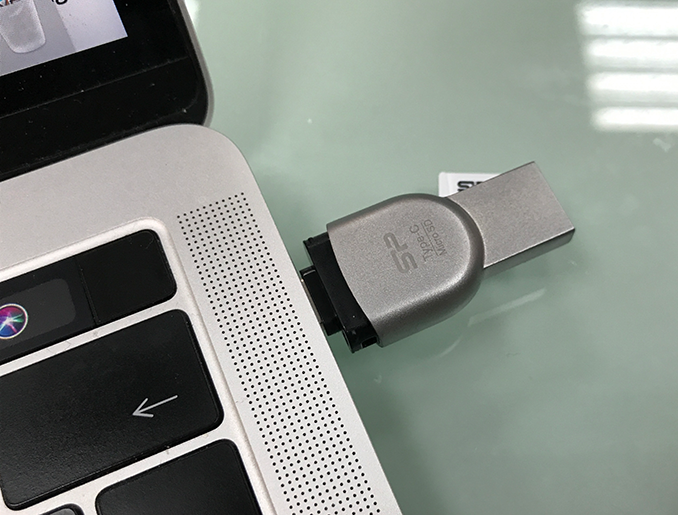
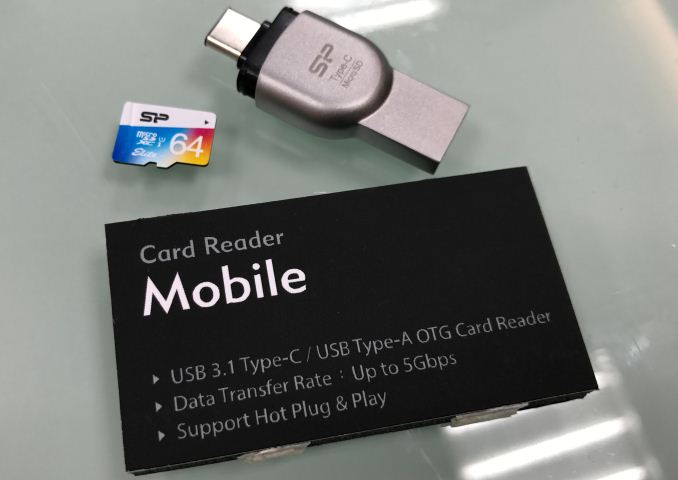



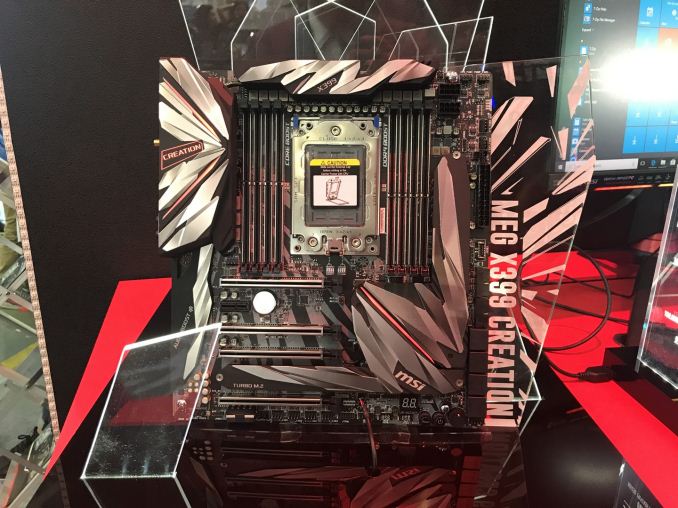

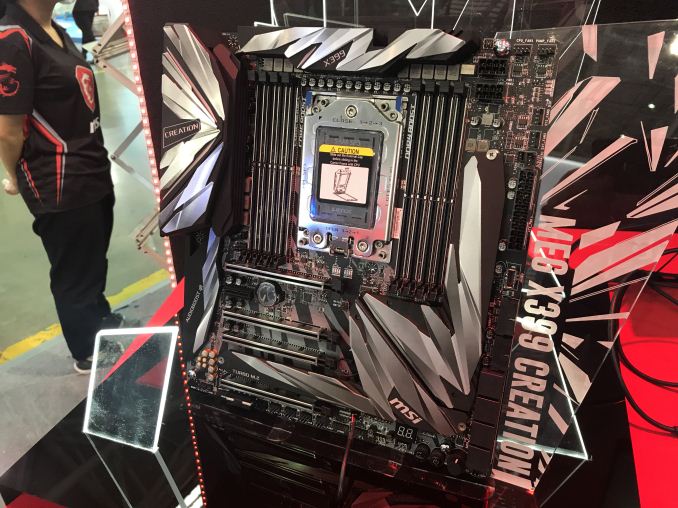
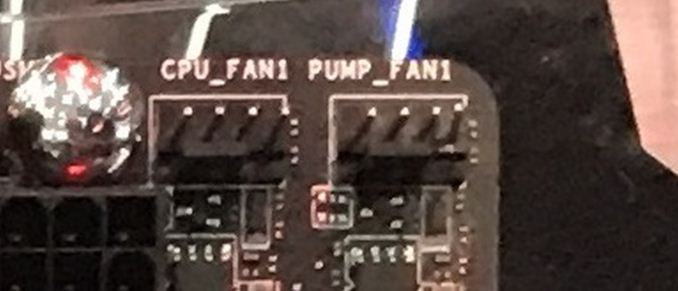

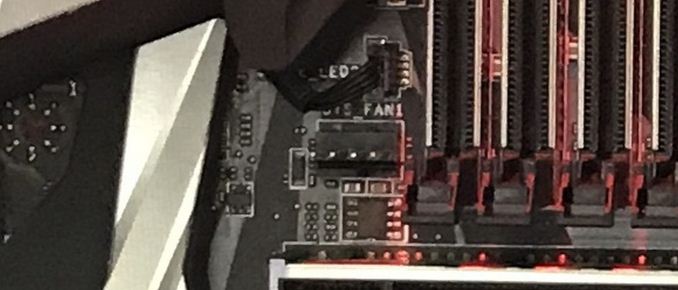
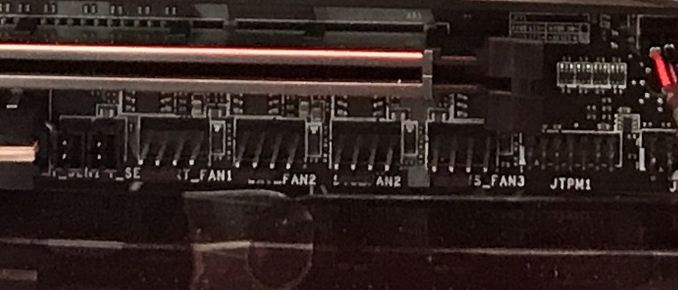
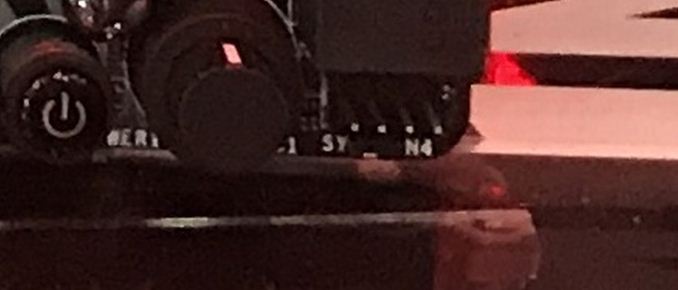







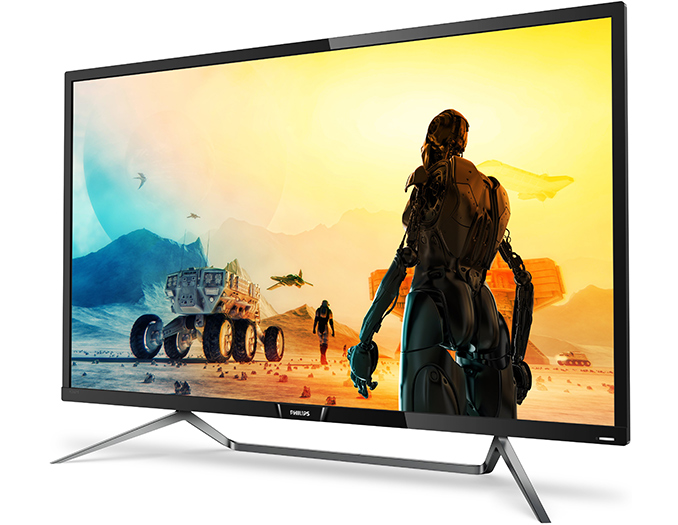
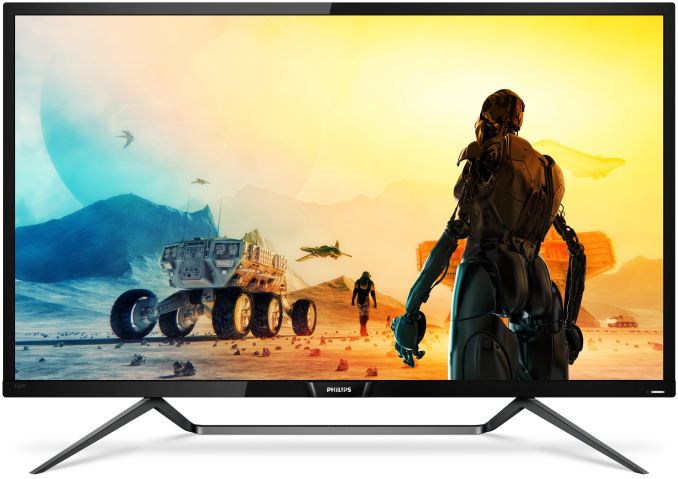

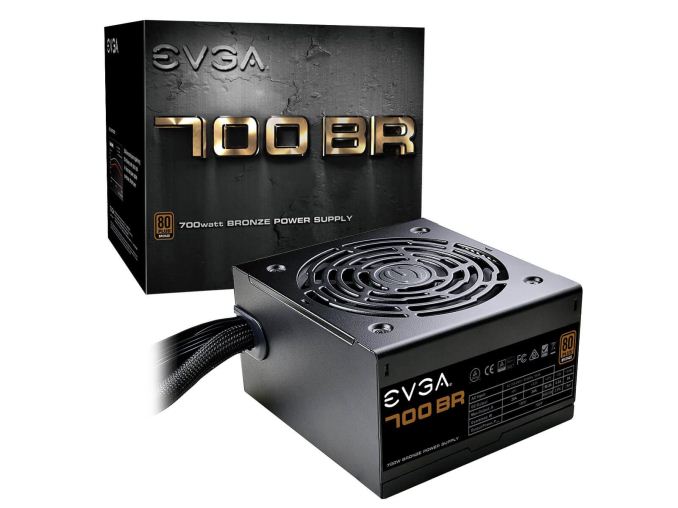
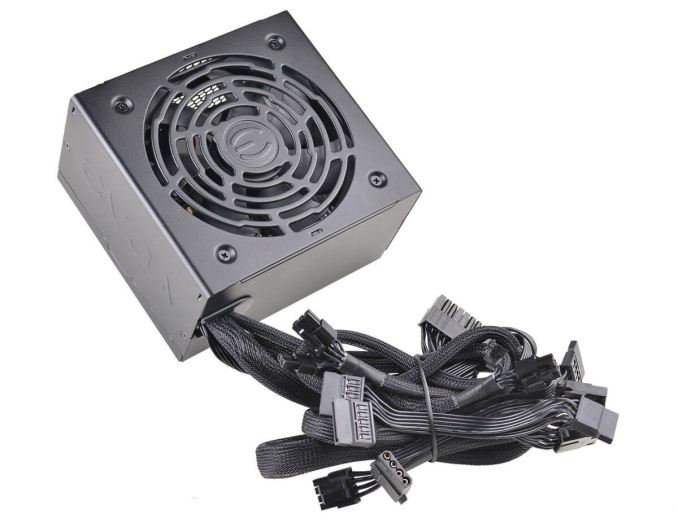
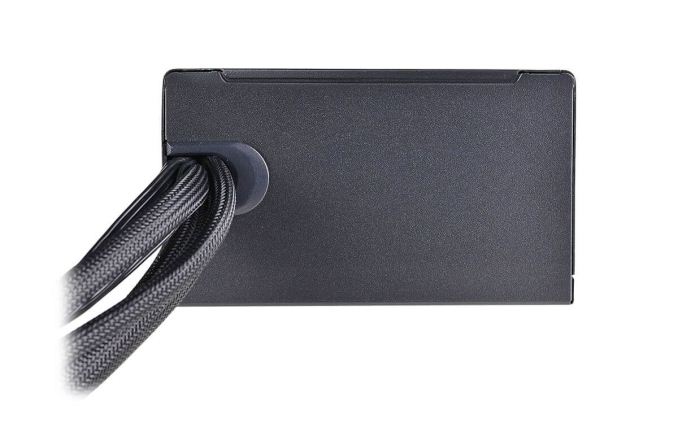



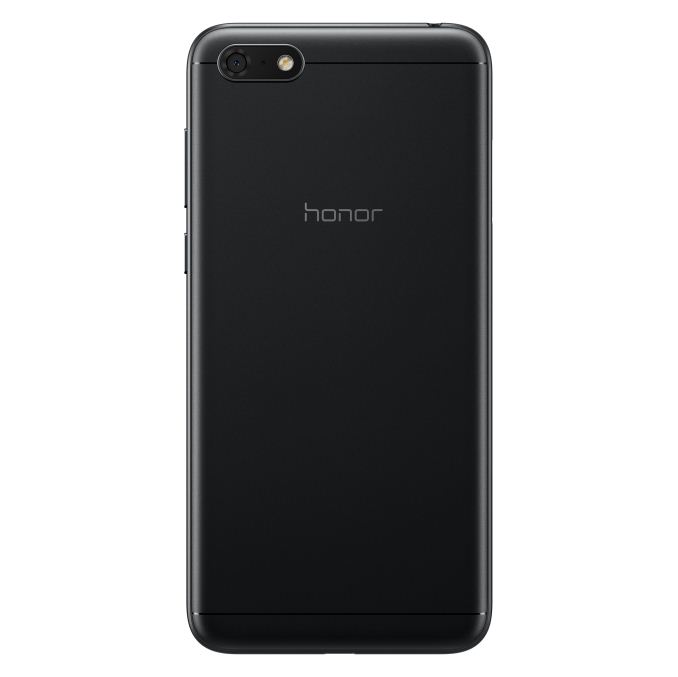


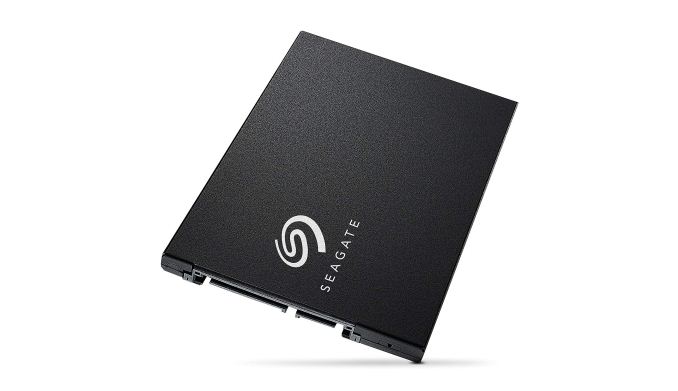
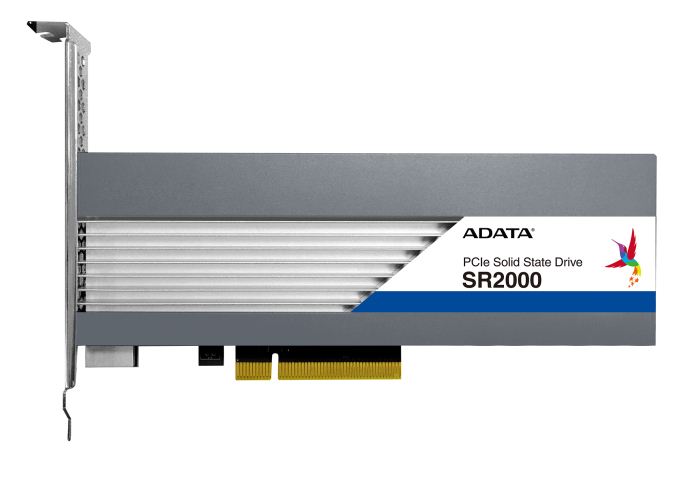
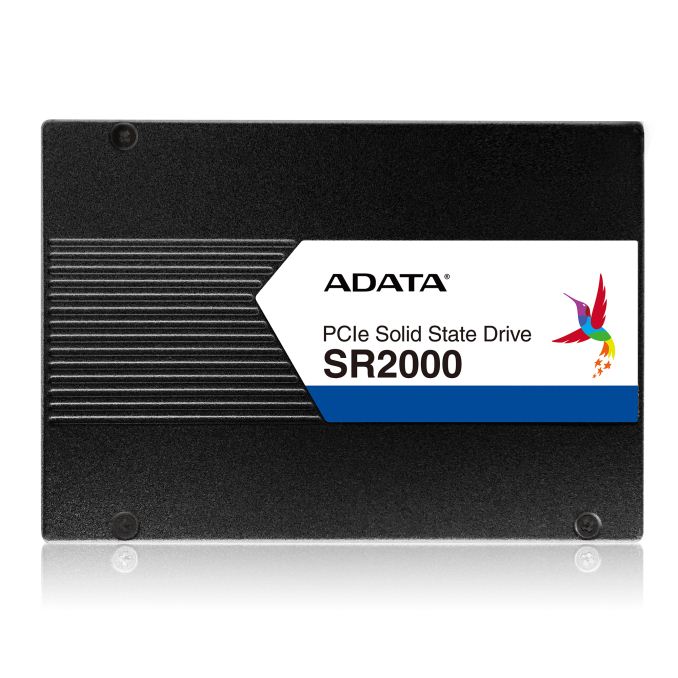
















Bookmarks